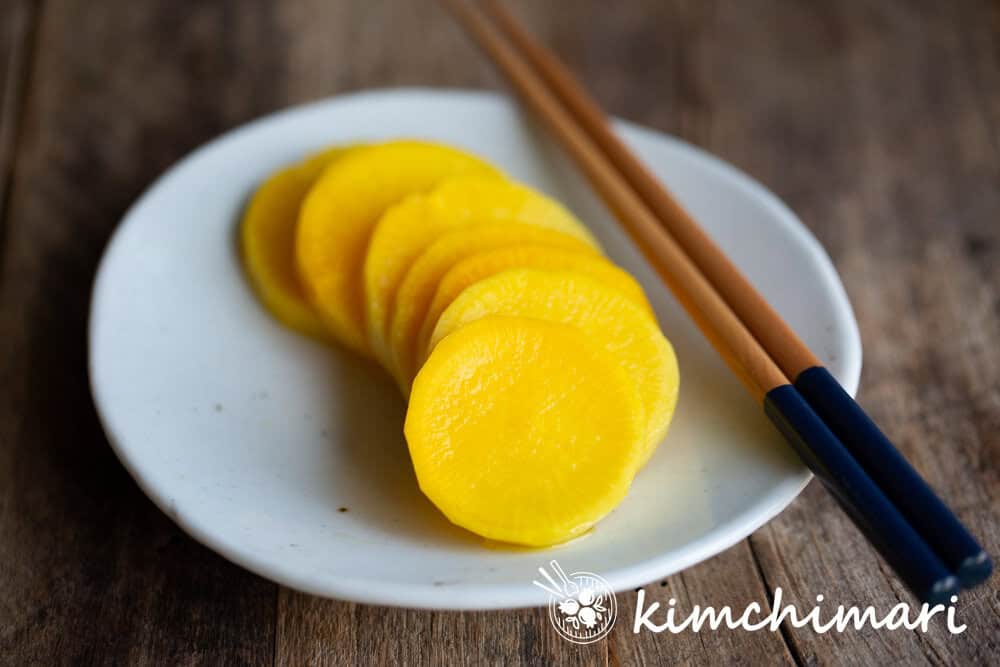Korea’s tourism scene is on fire. K-pop. K-dramas. K-something. Everyone wants a slice of Hallyu, so the government, media, and countless “parachute influencers” keep pushing the same handful of tourist overrated tourism spots—whether they’re actually any good or not. Problem is, they’re often about as satisfying as cotton candy: sweet, airy, and completely hollow. Here’s a breakdown of some notoriously overrated spots, complete with scores (1 = “Don’t bother,” 10 = “Must do”), plus better alternatives to help you experience more than just crowds and overpriced street food.

Fish vs. Ducks: Why These Spots Miss the Mark
Ever wondered why some attractions feel so phony? It’s because many local tourism promoters—our “fish”—grow up in the same pond and don’t realize the rest of the world has water, too. Then you have the “ducks,” i.e., foreigners or worldly Koreans who go from pond to pond and see what’s truly special. Unfortunately, the “fish” keep building or pushing these carbon-copy attractions, convinced they’ll wow everyone. Spoiler: They don’t.
1. Nami Island
- Type: Domestic, Artificial
- Score: 4
- Authenticity: 3
- Good for: K-drama fanatics, day trips with kids

Yes, “Winter Sonata” was filmed here. Yes, you’ve probably seen it in every travel brochure, even though it’s now older than many of the visitors to Nami Island. It’s an artificially created island and feels like a curated theme park. Full of photo-ops and Instagram Couples™ awkwardly riding tandem bikes, it’s decent if you’ve already done everything else in Korea. Most first-time visitors leave scratching their heads: “So…that’s it?”
Alternative: Ganghwa Island
If you want actual history and real cultural significance, Ganghwa Island beats the pants off Nami. It’s massive, authentic, and even offers glimpses of North Korea. Better scenery. Better food. Fewer cringe selfie bikes.
2. Myeongdong
- Type: Shopping District
- Score: 4
- Authenticity: 2
- Good for: Checking off your “I was in Seoul” shopping list
Once upon a time, Myeongdong was the place to shop. Now it’s an overpriced labyrinth of street food stalls that all serve the same tteokbokki. Locals have mostly fled, leaving behind just tourist-trap cosmetics shops and Zara stores. Why would you travel all the way to Korea to go to the same stores you have at your local shopping center? It’s not like these items are manufactured in Korea, giving you a discount.
Alternative: Dongmyo Flea Market
Instead of battling crowds in Myeongdong, head east to Dongmyo. It’s a sprawling flea market that’s part thrift paradise, part living museum of random Korean antiques. Think vintage leather jackets from the ‘80s next to dusty LPs and mountains of ajumma pants. You never know what you’ll find, and that’s half the fun. More importantly, it still feels real—no cloned cosmetic shops or tourist-pandering stalls in sight. If you want an adventure (and bargains), Dongmyo is the treasure hunt you didn’t know you needed.
3. N Seoul Tower
- Type: City Landmark
- Score: 5
- Authenticity: 4
- Good for: Sweeping city views, fighting crowds
 Beautiful architecture building N Seoul tower on namsan mountain landmark of Seoul City in South Korea
Beautiful architecture building N Seoul tower on namsan mountain landmark of Seoul City in South KoreaNothing screams “tourist” like the lines to get up that cramped cable car. The views are nice, but you’ll be elbowing hordes of people who all had the same idea. The famous “locks of love” area is 99% hype, 1% actual romance.
Alternative: Naksan Park

For panoramic cityscapes without being squashed by fellow travelers, Naksan Park is your jam. Bonus points for seeing a section of the Seoul City Wall, which is both historic and scenic.
4. Gangnam
- Type: Area
- Score: 6
- Authenticity: 5
- Good for: Nightclubs, fine dining, pretending it’s 2012 “Gangnam Style”
Gangnam is the epitome of commercialized modern Seoul—fancy coffee shops, major chain stores, and zero traditional charm. High rent forces out all the mom-and-pop gems that give an area its soul.
Alternative: Hongdae
If Gangnam is the jocks and cheerleaders, Hongdae is the freaks and geeks. Younger, artsy, borderline chaotic—and way more fun. Street performances, unique cafes, and quirky boutiques make for genuine local experiences.
5. Starfield Library
- Type: Instagram Bait
- Score: 2
- Authenticity: 1
- Good for: Fake books, fake grandeur, reeling in “likes”

“A fake library filled with fake books for fake people.”
That’s no exaggeration. This monstrosity in COEX Mall is mostly styrofoam props. The “library” is a remodeled food court that was made only for the ‘Gram. Seriously, why would you go to Korea to go to a fake mall library and–read books in Korean?
It’s the poster child for how Seoul tries to build a tourist attraction out of absolutely nothing.
Alternative: KOTE
Tucked away in an old hanok building in Insa-dong, KOTE has real books, a wine and coffee bar, and actual local soul. Explore the art galleries, soak in the vibe, and skip the manufactured mall experience.
6. Petit France
- Type: Domestic, Artificial
- Score: 2
- Authenticity: 0
- Good for: People who’ve never been to Europe (and want the worst intro possible)

Why you’d fly to Korea just to see a fake French village is beyond me. If you want a taste of real Europe, hop on a plane—not a bus to Gapyeong.
Alternative: Yongin Folk Village
If you’re going fake, at least go Korean fake. Yongin Folk Village is still artificial, but it’s historically grounded in Korean tradition, and there’s actual charm if you let it work its magic.
7. Rail Bikes
- Type: Domestic
- Score: 5
- Authenticity: 2
- Good for: Leg day, scenic selfies
Korea turned old train tracks into pedal-carts. Sounds cute until 15 minutes in, when you’re sweating profusely, wondering, “Is this ride over yet?” Great for domestic tourism, but not exactly a deep cultural experience.
8. Seoullo 7017
- Type: City Park
- Score: 5
- Authenticity: 4
- Good for: Snagging a couple photos, short walks
A former overpass turned into a pedestrian walkway, meant to evoke New York’s High Line. It’s somewhat charming, but it’s newly developed, so it lacks that organic vibe. Give it another decade, maybe.
Alternatives: Cheonggyecheon Stream & Gyeongui Line Forest
- Cheonggyecheon started off as a concrete trickle but is blossoming into an actual scenic waterway over time. Make sure to get picks of “Bob” the Heron, who is very photogenic.
- Gyeongui Line Forest Park is a gorgeous strip of greenery, artsy cafes, and quirky restaurants built along old tracks. Unlike Seoullo, there’s actual shade!
9. Factory Outlets
- Type: Shopping
- Score: 1
- Authenticity: 1
- Good for: Seeing how outlets in Korea can be pricier than mainstream shops
If your idea of fun is paying import taxes on Nike gear, be my guest. But trust me, real Koreans aren’t flocking here for deals. They’re too busy saving their won.
- Type: Shopping
- Score: 2
- Authenticity: 5 (for the area, not the malls)
- Good for: Poop bread and flea-market rummaging
The old Insa-dong was a wonderland of winding alleys. Developers came in, bulldozed them, and built these malls. Ssamziegil has a few interesting craft shops, but mostly it’s a carnival of novelty socks. Hello Insa-dong is chain restaurant central.
Alternative: The Alleys of Insa-dong
While they still exist, get lost in the labyrinth of side streets. You might stumble upon hidden teahouses, artisan workshops, or the Knife Gallery—which is exactly what it sounds like.
11. Gwangjang Market
- Type: Traditional Market
- Score: 6
- Authenticity: 8
- Good for: First-timers, famous mung bean pancakes, beef tartare
A must-see that’s become an overcrowded “tourist mosh pit.” The food is legit, especially the mung bean pancakes (bindaetteok) and raw beef (yukhoe), but it’s typically elbow-to-elbow.

Bonus: The Netflix Lady
She’s got lines a mile long for her noodles. Newsflash: everyone else sells the same noodles. Locals just shrug and get them from the lady with the shorter wait.
Alternative: Mangwon Market
Less hype, more real-life. Locals buying groceries, stalls selling crispy fried chicken, and a fraction of the tourists.
Beyond the Tourist Traps
Explore Local Neighborhoods
Try Seochon Village or Ikseon-dong Hanok Village. You get a heady mix of old hanok architecture and modern creativity, minus the forced “Korea 101” vibe.
Discover Cultural Hotspots
Check out Oil Tank Culture Park, repurposed industrial tanks turned into artsy communal spaces. It’s as cool (and random) as it sounds.
Embrace Nature in the City
Seonyudo Park—an island in the Han River with landscaped gardens and scenic trails. Finally, some peace in this megacity.
Immerse in Traditional Culture
Look for less touristy hanbok rental experiences, or tea ceremonies in smaller teahouses, or learn Korean calligraphy. If you want authenticity, you won’t find it in the big shiny complexes.
Dive into Local Art Scenes
Skip the tacky Trickeye Museums and check out smaller galleries in Insadong, or even the occasional event at Dongdaemun Design Plaza—still touristy, but at least the architecture is mind-bending.
Conclusion
Look, Korea has so much real, mesmerizing culture—great food, jaw-dropping scenery, bizarrely entertaining neighborhoods—but the mainstream travel media, government, and a parade of influencers push these overhyped spots they assume foreigners want to see.
The real soul of Korea isn’t at a fake library or a K-drama theme park. It’s in the local markets, the hidden alleys, the battered old hanok teahouses, the weird experimental art festivals, and the random neighborhood restaurants serving killer kimchi stew. So step off the well-trodden path and embrace your inner “duck.” You’ll leave with stories more authentic than any heavily-edited Instagram reel can promise.
Take a chance on lesser-known neighborhoods. Talk to locals. Explore on foot. Trust me. You’ll find a version of Korea that’s a thousand times more compelling than a day wasted on a swinging bridge that leads nowhere.
Safe travels, and remember: nothing says “I get you, Korea” like a big bowl of something spicy from a market where the menu isn’t written in English.











 English (US) ·
English (US) ·